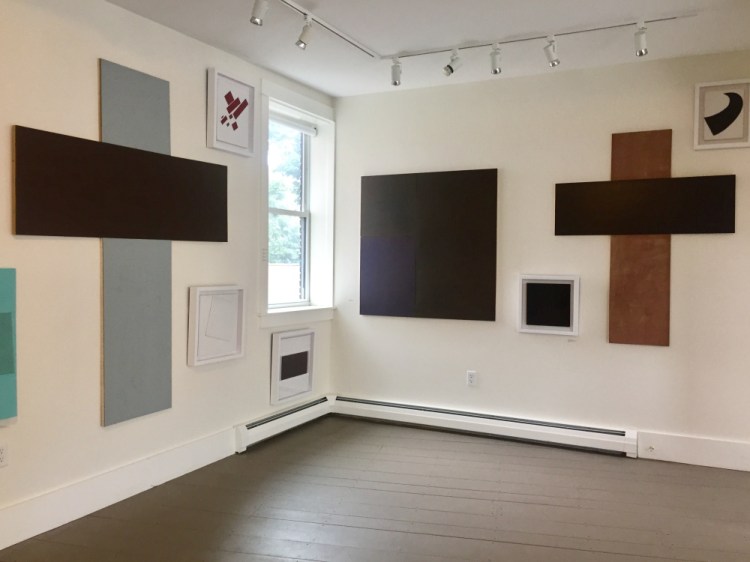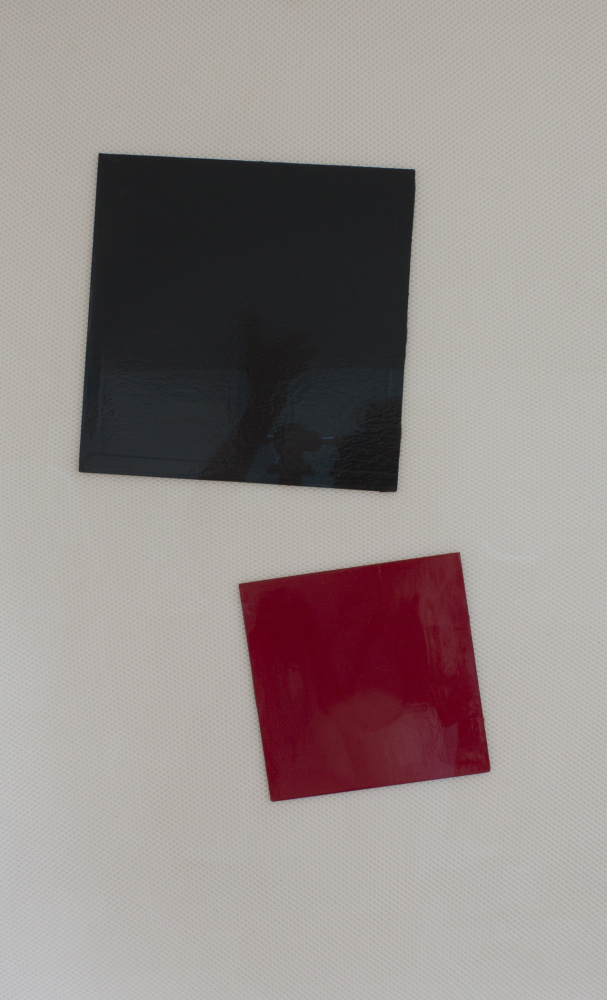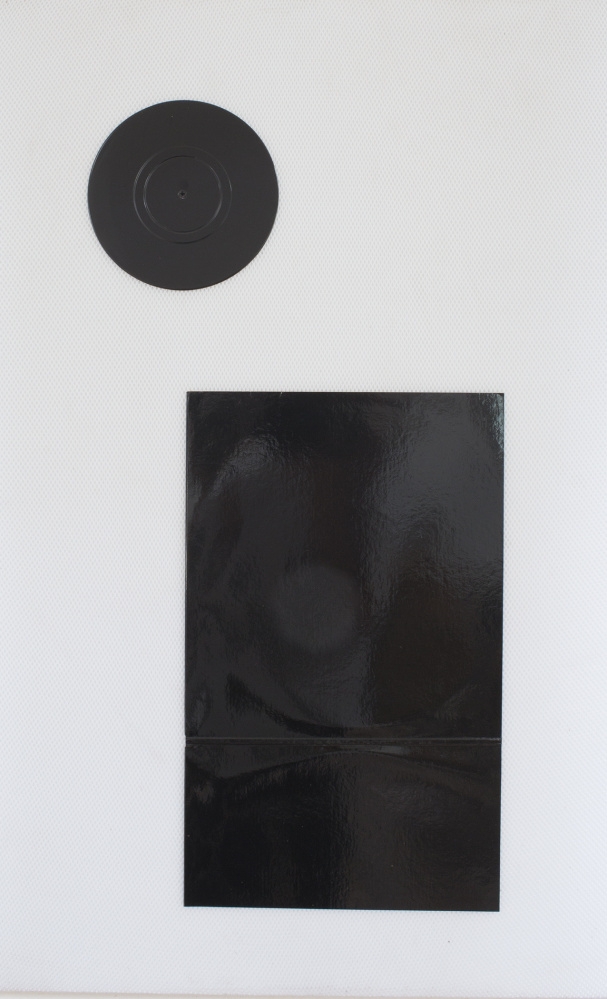When I was a drawing instructor, my favorite homework lesson to assign students was to copy four Matisse drawings. It is not just a lesson in drawing, it’s a lesson in humility.
Thinking they had a light load – copying a few simple drawings – students would procrastinate and inevitably show up to class frustrated and exhausted but, in a sense, enlightened.
Simple doesn’t mean easy. When I think of simple, chicken broth and Hemingway come to mind. I can’t write like Hemingway, and for the life of me I can’t make an excellent chicken broth.
The show at PhoPa Gallery of Howard Greenberg’s recreations of paintings by the Russian avant-gardist Kasimir Malevich demonstrates this kind of masterful simplicity. Malevich is most famous for painting a black square on a white canvas just over a hundred years ago. He was unquestionably was one of the most radical painters in Western history, and, like Greenberg, I have long thought of him as my all-time favorite painter.
Malevich wasn’t much for rulers or fussily straight edges, so copying Malevich is more about getting a feel for his work than following a well-measured recipe. Greenberg, chairman of the master of fine arts program at Maine Media College, clearly had an idea about the balance of challenges and rewards when he set out to make an entire exhibition of Malevich paintings out of old record sleeves, records, speaker grille fabric, automobile paint and so on. Such a challenge was undoubtedly presented by the very idea of “PhoPa” – a witty mission statement announcing the gallery’s etiquette-challenged focus on paper and photography. Record sleeves, after all, are made from paper.
One of the many playful ironies of Greenberg’s Malevich paintings is the extent to which they are not abstract, but mimetic. That is, they are trying to look like something recognizable. The first image in the gallery is unmistakably the Museum of Modern Art’s iconic “Black Square and Red Square” of 1915. The image is particular in part because of the tilt of the squares. But the connection to Malevich opens Greenberg’s painting to something beyond typical Western stuff like angles and Euclidian logic.
Copying is one thing, but Greenberg is translating Malevich’s works. It’s a process of perspective. Metaphorically, if Malevich’s work was the Bible, Greenberg’s work is not a copy of the Bible, but a book about it. Still, it helps the reader/viewer find their way to the ultimate ideas of the original work.
Again and again, we find Greenberg’s playful problem-solving going beyond the simple copying of the paintings, and it forces us to think – to try to follow both him and Malevich. The most challenging painting I have seen in a long time is Greenberg’s version of the late find “Black and White Suprematist Composition” of 1915 that went to the Moderna Museet in Stockholm in 2004. It’s an unusual painting for Malevich insofar as the painting is black with a white rectangular corner in the lower left. It feels more like an Ad Reinhardt or a 1960s minimal painting than an early Malevich. Moreover, Greenberg makes the white section dark blue – so dark that it’s almost black. It’s perplexing from a design perspective, but strong enough to make it clear that Greenberg is doing more than mimesis here. The painting is moving towards monochrome, pushing the idea of Malevich’s Black Square with a critical edge that hints that painting still had places to go after Malevich opened that square, black door.
Greenberg’s materials and clear alternate solutions to Malevich’s paintings present both an intelligent appreciation and a critical encapsulation of the late artist’s work that makes for a humble, fun and entertaining experience.
The photographs of Elizabeth Greenberg, Howard’s wife, occupy the other side of the gallery. The soft-focus black and white landscapes have a dreamy, old-timey feel that may seem antithetical to Howard’s electrically charged art history game. But the works share a surprising set of qualities: Her long-exposure shots (2-4 seconds, I am guessing) combine with a circular structure (dodging and burning but digitally constructed?) to imbue a sense of visionary experience. The softness of the forms plays to Malevich’s loose, shimmering and organic touch. And the motion of the centered focus draws the viewer into the image rather than into a traditional, Western single-point perspective landscape.
This absence of a perspective point is key for thinking about Malevich’s abstraction. It seems obviously based in the binary logic of figure/ground – the idea that we only see a form by distinguishing it from the visual background. But Malevich only uses this experience as a launching point for something that goes beyond the perceptions of the body to the notion of perceptions of the spirit. Here, we need to open up our typical boundaries of language to follow broader notions of spirit, like the French idea of “esprit” – which encompasses ideas of consciousness, wit, energy and intellect as much as any metaphysical sense. English has “spirited” debates in addition to spirituality.
In this sense of spirit, Malevich’s abstraction follows the transportive function of landscape, which typically allows us to imagine our bodies in a different place. With Malevich, the idea is motion, but a motion which leaves the physical body behind. If a scene (pictured from above, for example) lacks a solid place for our physical presence, we are more likely to see it as imagined or as following dream logic. Elizabeth Greenberg’s soft-focus and typically pathless world is such a place. As such, her work helps open the door to seeing Malevich’s abstractions as art that goes well past formalism and the literalist notions of minimalism.
This is the first time that Howard and Elizabeth Greenberg have shown together. And because this is a very specific body of work for Howard, it comes off as a side project. But he uses his confident sense of context, along with heavy measures of wit, irony, playfulness and savvy observation, to bring out to bring out the best in his wife’s, Malevich’s and his own art.
Freelance writer Daniel Kany is an art historian who lives in Cumberland. He can be contacted at:
dankany@gmail.com
Send questions/comments to the editors.






Success. Please wait for the page to reload. If the page does not reload within 5 seconds, please refresh the page.
Enter your email and password to access comments.
Hi, to comment on stories you must . This profile is in addition to your subscription and website login.
Already have a commenting profile? .
Invalid username/password.
Please check your email to confirm and complete your registration.
Only subscribers are eligible to post comments. Please subscribe or login first for digital access. Here’s why.
Use the form below to reset your password. When you've submitted your account email, we will send an email with a reset code.